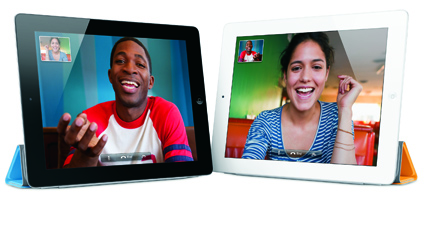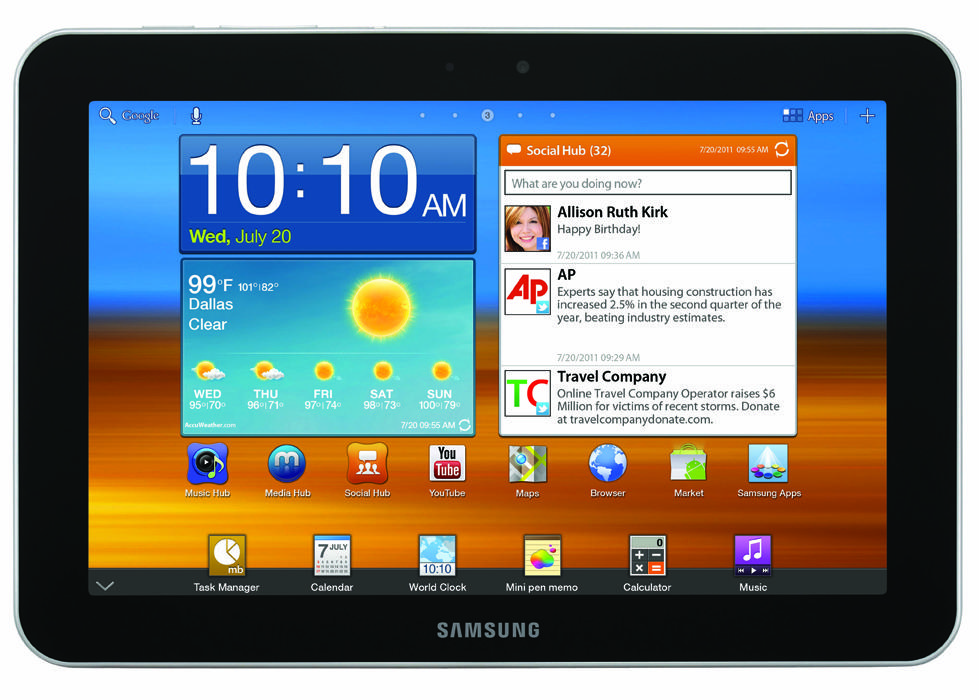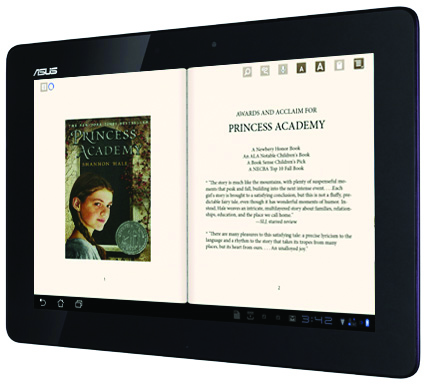Non-Apple Tablets Join iPad 2 at the Top

(Courtesy of Apple)
February 1, 2012
From the subways of New York to the classrooms of Fordham College at Lincoln Center (FCLC), tablet computers are appearing in every setting imaginable. Tablets have been available to consumers for almost a decade, but only recently have these portable touch-screen devices seen a massive surge in popularity. Although this sudden demand for tablets seems to have been fueled by a variety of factors, it wasn’t until the 2010 release of the Apple iPad that tablet computers really took off.
Like the iPhone, Apple’s iPad redefined the platform with its elegant design, iTunes compatibility, the App Store and a simple, efficient interface. Since then, dozens of tablets have emerged that embrace the high standards set by the iPad. With such a saturated market, it can be difficult to identify the best product. So if you’re shopping around for a new tablet device, hopefully the following brief comparison of a few top models will shed some light on which device is right for you.
Apple iPad 2
Ladies and gentlemen, presenting the one and only iPad. This device revolutionized tablet computing with easy iTunes synching, a straightforward interface and Apple’s sexy design. Overall this is a very solid product that is good at just about everything. “I love everything about it,” Nicole Hellman, FCLC ’12, said. “I haven’t found anything about it I hate yet.” However, though most other iPad owners share similar sentiments, the iPad isn’t the only high-quality tablet on the market anymore. So if you can get over the hype, you might be interested in one of many equally powerful devices sold for a fraction of the cost. Of course, many people are more than willing to pay the extra premium because after all, it is an Apple product.

PROS:
Very easy to use.
App Store and iTunes.
It’s the iPad…
CONS:
Very expensive.
Requires iTunes to sync with a computer.
App development is more difficult and requires a license.
Samsung Galaxy Tab
If you’re interested in buying a great tablet computer without paying extra for the Apple brand name, then the Samsung Galaxy Tab is an extremely viable option. This tablet has all the same functionality as the iPad 2 for just a fraction of the cost. The Samsung Galaxy Tab is powered by the Android operating system, giving you access to the Android Market and all the wonderful applications it has to offer. Samsung Galaxy owner, Ana Velasco, FCLC ’13, agreed. “The Galaxy’s smaller size makes it way more convenient than an iPad. Plus, now that Android has gotten so big, the market is just as good as [Apple’s] App Store.” The Samsung Galaxy does come in a variety of shapes and sizes. So whether you’re looking for a full sized tablet or you want something a little more convenient, there is a Galaxy tablet for you.

PROS:
Less expensive than the iPad but just as capable.
Runs the Android operating system.
App development is easier and free.
CONS:
Slightly more complex to sync with a computer.
Not an iPad.
Asus Transformer Prime
Another option for those indifferent to the publicity and prestige of the iPad is the Asus Transformer Prime. Like the Samsung Galaxy, this tablet also runs on the Android platform—giving you access to all the features and functionality that it includes. The Transformer Prime is also just about the fastest tablet computer available, even rivaling some lower end PCs in speed. Those with a slightly higher budget should definitely consider the docking station that essentially converts the Asus Transformer Prime into a laptop. “The Transformer was fantastic,” commented Tony Pulickal, FCRH ’13, a student and technology consultant at Rose Hill. “I love the battery life, the screen size, and the docking station which extends the battery life and makes it perfect for note-taking and composing emails.” So for the efficient, tech savvy student interested in buying a tablet, the Asus Transformer Prime is another smart non-iPad choice.

PROS:
Most powerful Android tablet available.
Micro SD slot and mini HDMI port.
Docking station extends the battery life.
App development is easier and free.
CONS:
Currently no 3G support.
Can get pricey when combined with docking station.
Not an iPad.









